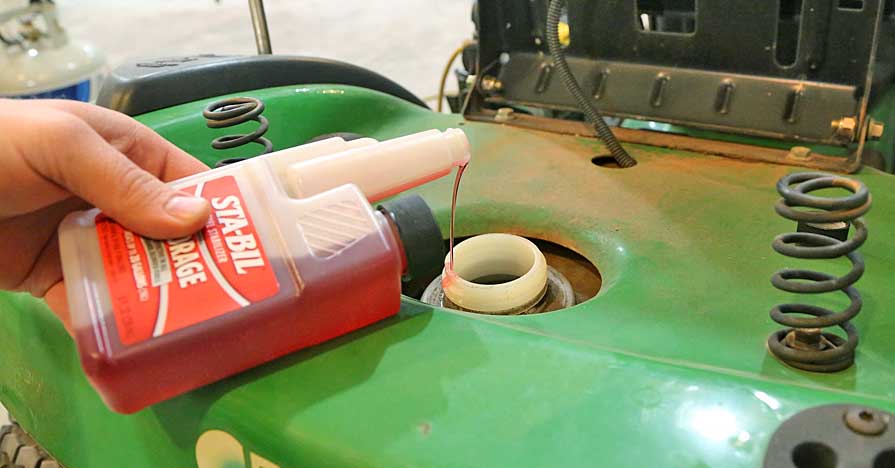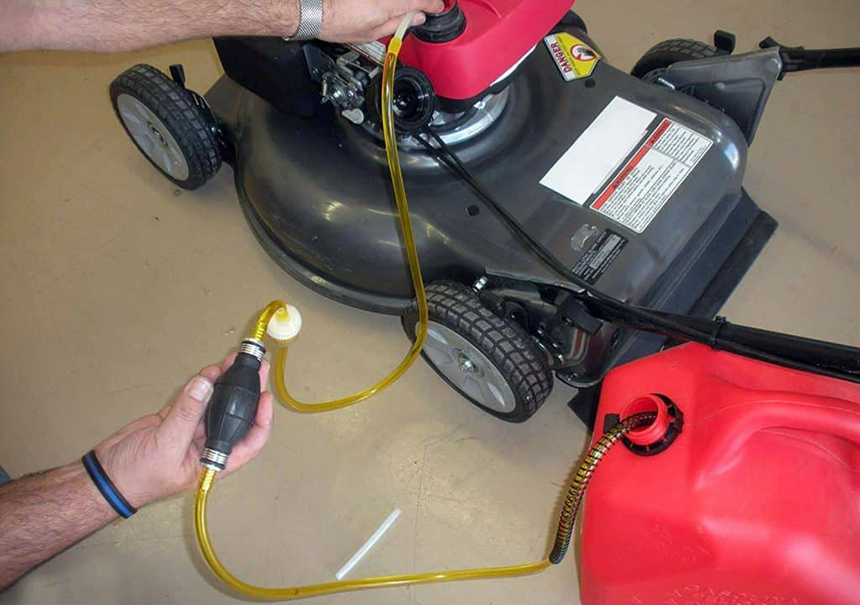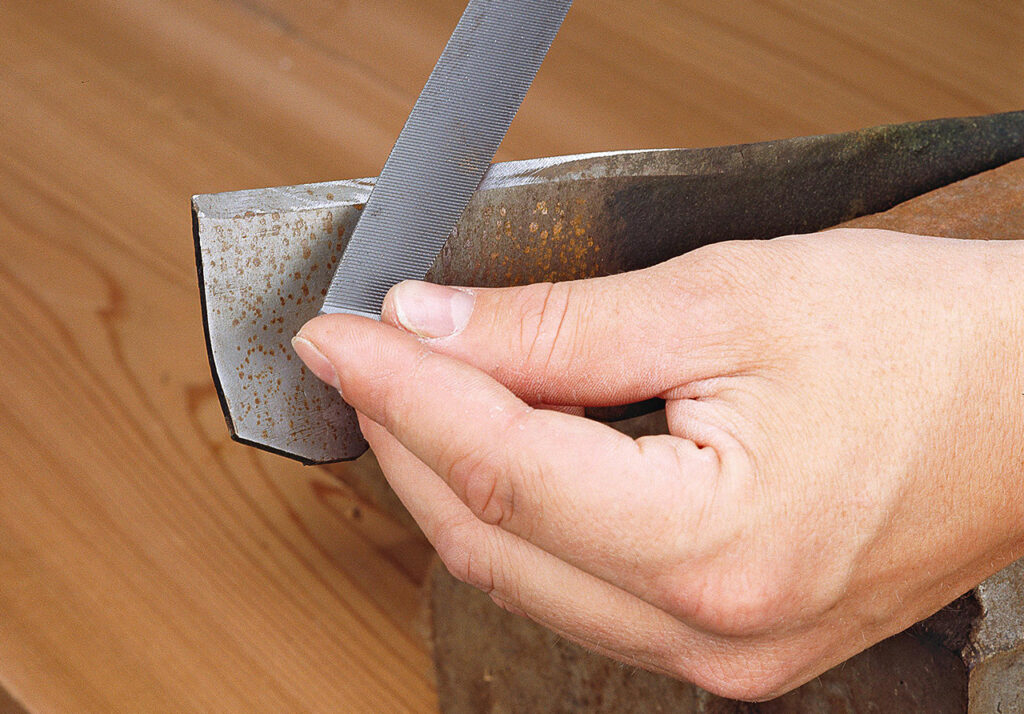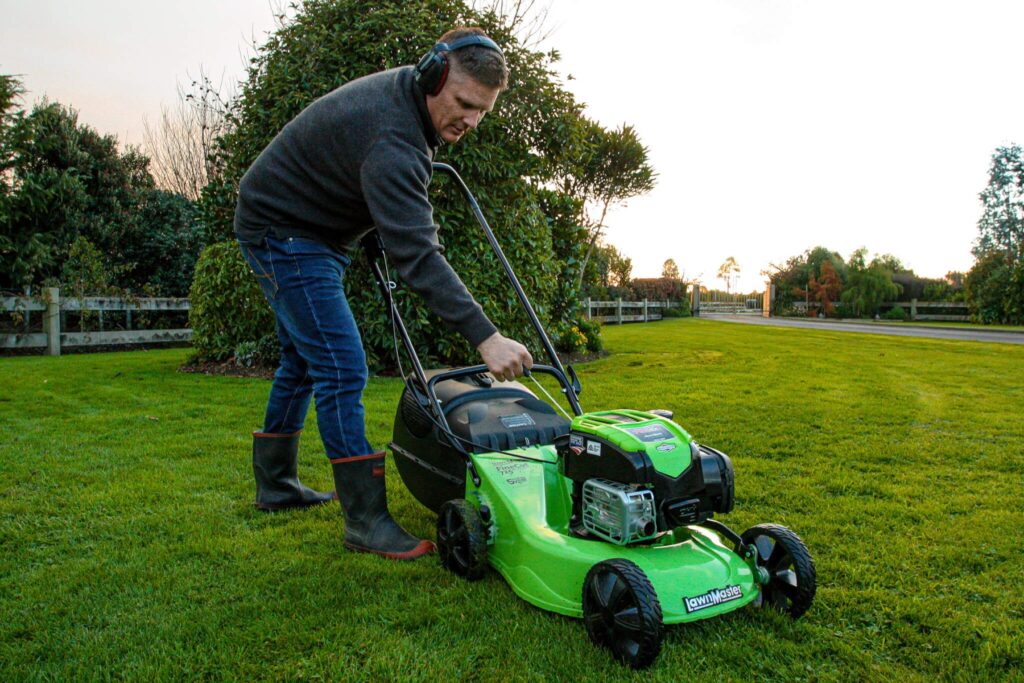In the last few weeks of summer, it’s standard procedure to mow the lawn for the last time in the season and prepare your mower for winter storage. One of the steps is draining gas from the lawnmower. Alternatively, you might need to drain old gas from your lawnmower after it has already spent a few months in storage. If you’re wondering just how you should do that, then this article is for you. The good news is, there are a few easy ways you can do that. We’ll discuss the reason why you drain the lawnmower and also look at a few of the simple ways to get the job done. Keep reading for a few tips for making this end-of-season task of how to drain gas from your lawnmower quick and easy! What equipment is needed for siphoning gas? For the most part, you only need a few simple items to siphon fuel from your gas lawnmower’s fuel tank.
If you plan to store your lawnmower for the winter season (or any other long period), it’s best to drain the gas from it. Essentially, unused gas that remains in the fuel tank can get stale over time. What generally happens is the gas forms sticky deposits and causes the carburetor to choke. In some instances, rust can form in various components, which affects the performance of your machine. That being said, it makes great sense to always drain the fuel tank before you place the machine in storage for the winter.
You’ll need:
Pro tip: We recommend draining gas if you’re not going to use the lawnmower for three or more months. If you’ve forgotten to do this, simply drain the gas before starting the lawnmower up again.
Generally, the most common way to siphon gas out of your lawnmower is by using some sort of tubing and pump. The principle is to generate enough air pressure into the tank to force gas into the tubing, after which the gas is forced into the tubing. Gravity then takes the gas into the jerry can.
Siphoning works well because it works great for mowers that don’t use fuel lines and are easy to reach and disconnect. It’s crucial to remember that while siphoning might empty the fuel tank, it often leaves a small amount of gas in the fuel filter, line, and even carburetor. Read on for the easiest steps to drain gas with a siphon.
The first step to effectively siphoning your engine is to add a fuel stabilizer, Trusted Source Advantages And Disadvantages Of Fuel Additives | ipl.org The assumption has long been that diesel is dying out, which means less and less automotive brands are producing products for diesel engines. www.ipl.org which in short, is a treatment that extends the life of gas in the engine. A stabilizer works because it contains additives that minimize the fuel from breaking into tacky deposits. This also keeps the fuel fresher for longer.

Follow these few simple steps to prepare your engine:
If you think it’s time to replace your walk-behind model with a more economical model, consider the EGO Power+ LM 2000 Cordless to make mowing so much easier. Impressive features include LED lights, a 20″ cut capacity, and a convenient push-button start. You’ll easily see why this mower is regarded as one of the best lawnmowers for hills around.
The next step in draining with a siphon involves cooling down the lawnmower on a flat surface. To correctly perform this step, follow the next few steps:
Whether the lawnmower is on the ground or upon a workbench or sawhorse, it’s important to ensure there’s no risk of injury or accident. Follow these few steps to ensure the siphoning process gets off to a safe start.
Essentially, there are three methods that you can opt for to empty a lawnmower tank. For each method, you’ll need an airtight fuel-safe container, a clear hose, and of course, gravity. Read on as we discuss these three methods in a little more detail.

When it comes to siphoning pumps, you can either opt for a manual or automatic choice which simply works by flipping a switch. All siphon pumps work pretty much the same way and consist of a simple, clear tubing with a pump in the center. As expected, the pump creates the initial suction required to get the fuel flowing. When you get the flow through the tubing, gravity will do the rest. Be sure to always put the right end of the siphon pump into the fuel tank. This is usually the end with the brass fitting. Once this end has been submerged into the tank, simply squeeze the pump a few times until the gas begins to flow. Always allow the tank to air dry for a few minutes to ensure that as much fuel as possible is out.
Another simple method of siphoning fuel from your tank requires a clear hose which you’ve cut into two varying lengths – one longer and another slightly shorter. This process involves the following steps:

This method should only be recommended for extreme emergencies. It involves turning clear tubing into a straw. This is how it works:
Pro tip: Wrap your hand around the tube so that it’s easy to pinch it closed as soon as you see the flow of fuel coming out up the tube.
Many lawnmower owners use this opportunity of draining the fuel as an opportunity to do some additional maintenance before storage. The most important piece of maintenance includes checking the air filter, oil reservoir, and general cleaning. Follow these additional tips to perform some effective maintenance:
During your storage preparation process, another good idea is to pour a small amount of fresh fuel into the tank. The splashing and some movement of the unit will loosen any residual debris. Once you’ve done that, simply drain it out as you did with the old fuel. When you’ve removed all the fuel, replace the spark plug as well as the spark plug wire. Your lawnmower is now ready for storage for the winter months, during which mowing the lawn isn’t necessary.
Pro tip: If you want to remove the very last drop of fuel from the tank, use an air compressor to blow-dry the interior of the tank.
While draining gas using a siphon is considerably easier, the job can also be done using a few other simple methods. Let’s have a look at the best way to drain gas without a siphon.
If you’re not really interested in a method that requires a lot of effort and you don’t mind wasting the last bit of gas in the tank, this method is for you. It involves three simple steps:
If you have a lawnmower that features a fuel line that connects directly to the carburetor that is easy to reach, then this next method is an option to consider. For this method, follow the easy steps below:
If you don’t have the tools required to effectively drain the gas from your fuel tank, the good news is that you can use a regular kitchen turkey baster! Simply follow these few simple steps:
This might sound obvious, but please don’t use the baster in the kitchen after using it to drain fuel!
One of the more popular lawnmower options to consider if you’re looking to replace your older model in the new season is the Worx WG779 40V Power Share. Features that make this model an impressive choice include a mulch or bag option, dull port charger, and battery meter. Often regarded as one of the best cordless lawnmowers, it’s a firm favorite.
We hope this article has shown you just how easy it is to drain gas from your lawnmower. Whether you want to perform a full service at the same time or just park the mower in the corner, there’s a method for you. Preserve the lifespan of your lawnmower, save gas and provide a necessary service on your machine all in one go! Opt for one of the simple solutions on how to drain gas from your lawnmower shown above.





